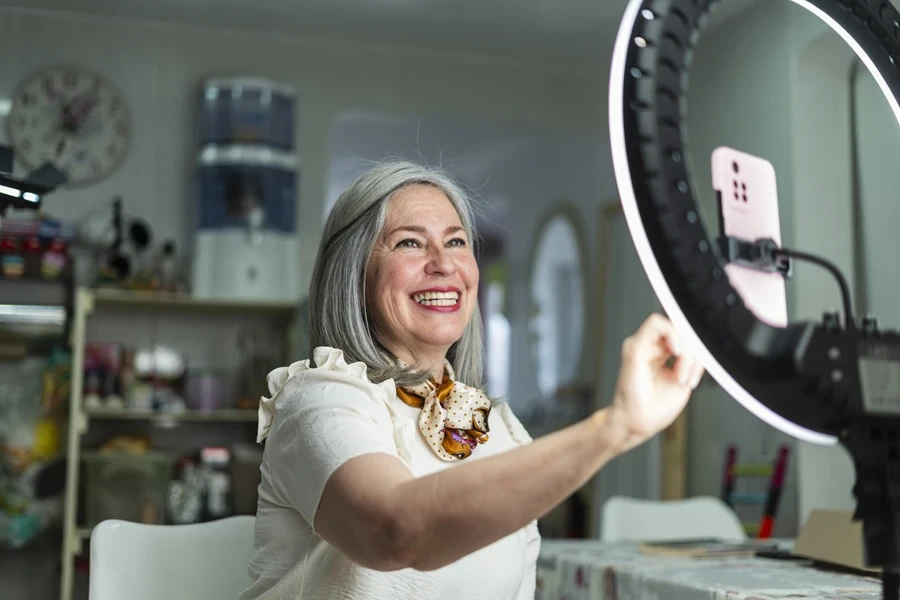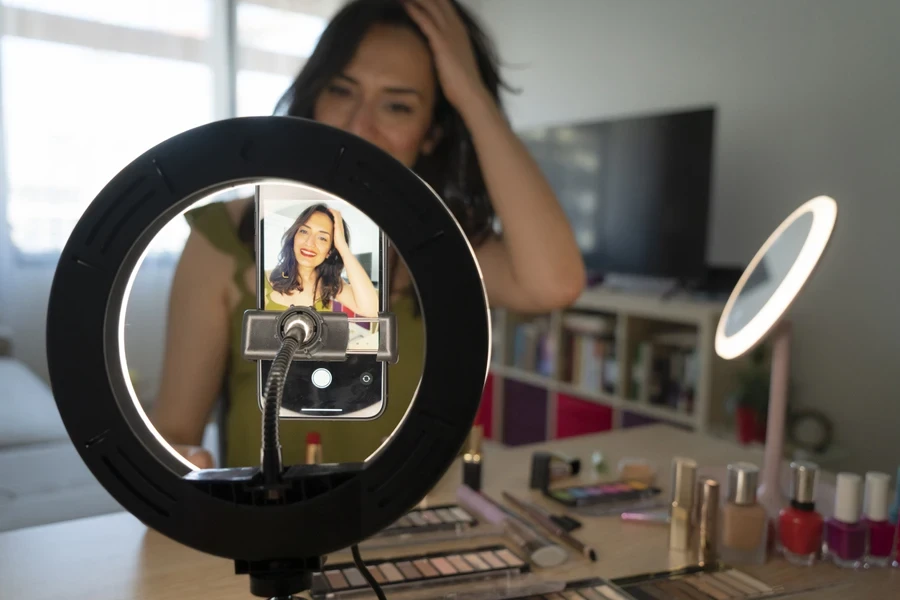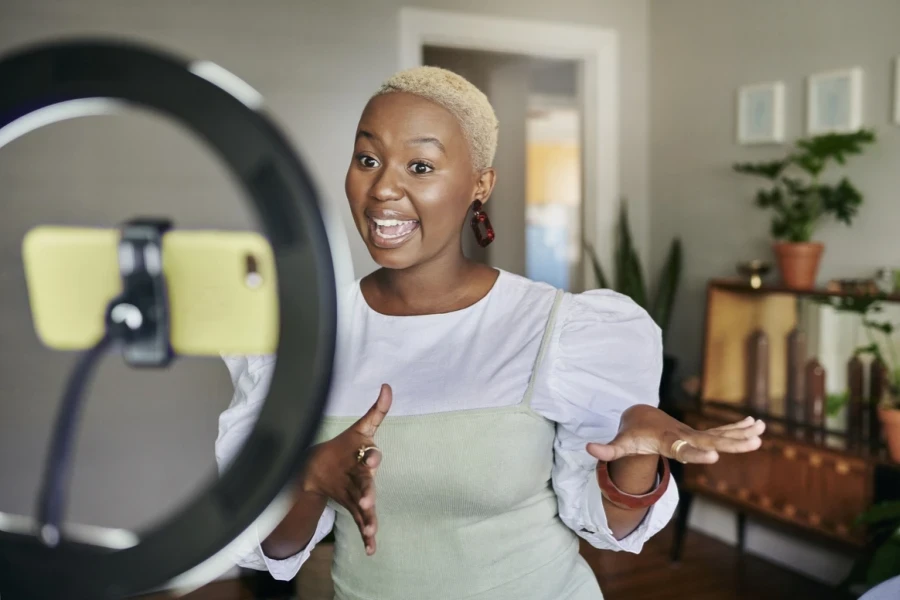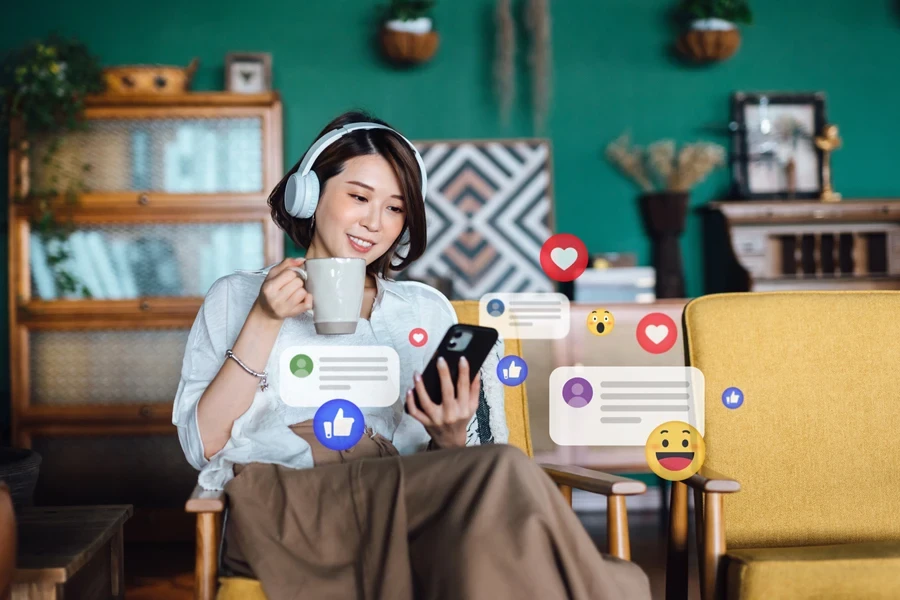Imagine someone is scrolling through Instagram and stumbles on a post about a new skincare product. The person talking about it isn’t a celebrity. They don’t have millions of followers or a TV show. It’s just a regular person, maybe with 8,000 followers, sharing their honest experience. Somehow, it feels different. More real. More trustworthy.
Now, imagine that same product being pushed by a big celebrity. It might look flashy but not feel genuine. This is the quiet genius of micro-influencers. These people with smaller followings have carved out a space in social media where trust and connection outweigh polished perfection.
Micro-influencers are becoming businesses’ secret weapon for building authentic customer relationships. Keep reading to learn about micro-influencers and what to consider when picking the best ones to work with.
Table of Contents
What is a micro-influencer?
Why businesses are turning to micro-influencers
How to find the right micro-influencer
3 challenges to keep in mind
Wrapping up
What is a micro-influencer?

Anyone with 1,000 to 10,000 followers on social media platforms falls under the micro-influencer category. They aren’t celebrity influencers or household names—they’re basically everyday people that an audience in a specific niche trusts deeply.
For example, a college student could share affordable fashion suggestions, or a stay-at-home mum offering tips on managing an active home. What makes micro-influencers different is the audience of like-minded people they’ve built through credible content—not because they’re famous.
Note: Micro-influencers are also great because they are relatable enough for their followers to care about their recommendations, leading to better brand awareness.
Why businesses are turning to micro-influencers

There are several reasons why brands are flocking to micro-influencers. Here’s a simple breakdown:
1. They feel real
Some consumers may have watched a celebrity ad and thought, “Do they even use that product?” With micro-influencers, that doubt rarely exists. Their content feels personal and not manufactured. When they talk about a product, it comes across as genuine—and that authenticity is gold in today’s marketing world.
2. Better engagement rates
Most people don’t realize that the bigger an influencer’s audience, the less engaged their followers tend to be. It’s not unusual for mega-influencers to have millions of followers but only get a handful of meaningful interactions.
Micro-influencers, on the other hand, are deeply connected to their audiences. They respond to comments, start conversations, and build relationships. This kind of engagement drives real results.
3. They speak to specific niches
Micro-influencers are often specialists in one area, whether it’s plant-based recipes, home workouts, or sustainable fashion. Their followers share those interests, making them the perfect audience for brands that fit into those niches. Instead of shouting into the void, businesses will speak directly to people who are already interested.
4. They’re affordable
Collaborating with a celebrity or top-tier influencer can cost hundreds (if not millions) of thousands of dollars. But micro-influencers are much more affordable. Many are happy to work for free products, small fees, or commission-based partnerships. For smaller brands, this makes influencer marketing accessible without breaking the bank.
How to find the right micro-influencer
So micro-influencers sound great. But how do businesses find the right one? It’s not as simple as picking someone with few followers. Here’s what to look for:
1. Engagement rate

Never partner with an influencer (micro or mega) without checking their engagement rate. It’s the most important metric, showing how much the influencer’s audience interacts with their content.
So, higher engagement rates mean the audience is more engaged and loyal, while a lower rate may mean the influencers have botted follower counts. Here’s a simple way to check it: add all the likes and comments on their posts, divide that by their followers, and multiply by 100 to get the percentage.
So, let’s say a micro-influencer has an average of 500 likes and 800 comments with 2,000 followers. Here’s what the engagement rate will look like:
(500 + 800) / 2000 x 100 = 65
Hence, the micro-influencer has a 65% engagement rate. If businesses don’t want to do manual calculations, they can use tools like Afluncer to see an influencer’s engagement rate in one glance.
2. Content quality
Even if micro-influencers have high engagement rates, it may be the wrong interaction. They may be making low-quality content, causing people to react badly (which counts as engagement). So, businesses must look out for content quality.
Businesses should check whether the influencer’s content is high-quality and consistent. Do they have sharp images? Are the captions intentional and engaging? Are the videos well made? These questions will help businesses know if the quality is something they can work with.
But there’s more. The last thing to check here is their content style. If it doesn’t complement the business, working with that influencer is unnecessary. High-quality content will always make a better impression than low-quality ones.
3. Follower growth rate

Micro-influencers have a chance to gain more followers, so retailers can also check how fast they are growing. Consistent, natural growth can be a good sign of their increasing popularity and relevance. If they have consistent, natural growth, it could mean their strong, engaging content is attracting real followers. However, watch out for sudden jumps in follower numbers—they might be bots or purchased accounts.
4. Audience demographics
After checking engagement and content quality, the next question is: What is their demographic like? This part is where businesses big into the influencer’s audience, focusing on factors like age, gender, interests, and location. It’s the only way to ensure their followers match the target audience, increasing the chances of campaigns hitting the mark.
5. Authenticity and credibility
Even if a micro-influencer passes all the three factors above, it will all be for nothing if they have zero credibility. Authenticity is everything in influencer marketing, so businesses must not hesitate to check how genuine the influencer seems.
See if they interact meaningfully with their audience if their endorsements are believable, and if their content fits naturally with their style. Influencers who feel real are more likely to earn trust and inspire action.
3 challenges to keep in mind

Micro-influencers are amazing, but they’re not a magic solution. Here are a few challenges businesses might face:
- Fake followers: Sadly, some influencers pad their stats with bots. Use tools like Social Blade to verify their authenticity.
- Content quality varies: Not every micro-influencer is a professional content creator. Be prepared to provide some guidance if needed.
- Time-intensive: Managing multiple micro-influencers can be a lot of work. Make sure you’re ready to invest the time.
Wrapping up
Micro-influencers might not have the fame of A-list celebrities or the reach of mega-influencers, but what they lack in scale, they make up for in authenticity. Their ability to connect with audiences personally makes them one of the most effective tools in modern marketing.
Micro-influencers can drive real results for businesses willing to find the right partners—whether that’s increased sales, better engagement, or a stronger connection with customers. People trust people. And that’s what makes micro-influencers so powerful.





 Afrikaans
Afrikaans አማርኛ
አማርኛ العربية
العربية বাংলা
বাংলা Nederlands
Nederlands English
English Français
Français Deutsch
Deutsch हिन्दी
हिन्दी Bahasa Indonesia
Bahasa Indonesia Italiano
Italiano 日本語
日本語 한국어
한국어 Bahasa Melayu
Bahasa Melayu മലയാളം
മലയാളം پښتو
پښتو فارسی
فارسی Polski
Polski Português
Português Русский
Русский Español
Español Kiswahili
Kiswahili ไทย
ไทย Türkçe
Türkçe اردو
اردو Tiếng Việt
Tiếng Việt isiXhosa
isiXhosa Zulu
Zulu